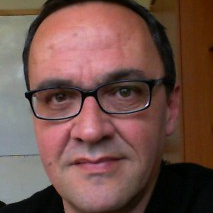Advanced Nanomaterials for Quantum Technology, Sensor and Health Therapy Applications
A special issue of Nanomaterials (ISSN 2079-4991). This special issue belongs to the section "Synthesis, Interfaces and Nanostructures".
Deadline for manuscript submissions: closed (31 October 2022) | Viewed by 25290
Special Issue Editor
Interests: semiconductor nanostructures; optical properties; energy transfer; sensors; carbon dots from biowaste
Special Issues, Collections and Topics in MDPI journals
Special Issue Information
Dear colleagues,
Intense interest in nanostructured materials is fueled by the tremendous economic and technological benefits anticipated from nanotechnology and nanodevices. Nanostructured materials have demonstrated great potential for applications in optoelectronics, sensors and cancer therapy. The advance in these areas will affect our daily life from how we design a fast computer, to how we preserve the environment, and how we diagnose and treat disease and pollution.
This Special Issue aims to cover a broad range of subjects, from nanomaterials for quantum technology applications to sensor and health science applications. The format of welcomed articles includes full papers, communications, and reviews. Potential topics include, but are not limited to:
- Nanomaterials for quantum technology applications;
- Nanomaterials for sensor applications;
- Nanomaterials for health science
Prof. Dr. Sotirios Baskoutas
Guest Editor
Manuscript Submission Information
Manuscripts should be submitted online at www.mdpi.com by registering and logging in to this website. Once you are registered, click here to go to the submission form. Manuscripts can be submitted until the deadline. All submissions that pass pre-check are peer-reviewed. Accepted papers will be published continuously in the journal (as soon as accepted) and will be listed together on the special issue website. Research articles, review articles as well as short communications are invited. For planned papers, a title and short abstract (about 100 words) can be sent to the Editorial Office for announcement on this website.
Submitted manuscripts should not have been published previously, nor be under consideration for publication elsewhere (except conference proceedings papers). All manuscripts are thoroughly refereed through a single-blind peer-review process. A guide for authors and other relevant information for submission of manuscripts is available on the Instructions for Authors page. Nanomaterials is an international peer-reviewed open access semimonthly journal published by MDPI.
Please visit the Instructions for Authors page before submitting a manuscript. The Article Processing Charge (APC) for publication in this open access journal is 2900 CHF (Swiss Francs). Submitted papers should be well formatted and use good English. Authors may use MDPI's English editing service prior to publication or during author revisions.






